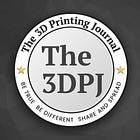There are many reasons why companies begin to decline. Some are obvious (outdated technology, slow adaptation to market changes, the arrival of cheaper or more innovative competitors), while others are hidden and only surface over time (rapid growth without proper scaling of structure and processes, complete dependency on grants or investors, or internal conflicts).
Today, we’ll look at a different, less obvious reason—one that can stretch an organization’s erosion over incredibly long periods. So long, in fact, that it becomes invisible.
It’s about how losing sight of the core purpose of a company can naturally lead it toward collapse.
The idea for this article came up recently while analyzing the Q1 2025 financial results of 3D Systems—a company that not only created additive manufacturing technologies but also essentially the entire industry. It’s been around longer than any other company (38 years) and remains the second largest in the Western world in terms of revenue (the first being Stratasys).
Since the end of the COVID-19 pandemic, 3D Systems has reported worsening results year after year. It ended 2024 with its worst performance since 2012 ($440.1 million, a 10% decline compared to 2023).
Its stock performance tells a similar story. The current market valuation of the company is embarrassingly low, fluctuating between $210–230 million. Not only are Chinese companies like BLT and Farsoon valued higher, but so are Israel’s Nano Dimension (including Desktop Metal and Markforged), Belgium’s Materialise, and even Australia’s Titomic.
This valuation is so low, it’s almost unfair. Seriously—3D Systems doesn’t deserve that.
But the market seems to think otherwise.
So, what’s behind this? Because on paper, it all looks quite impressive!
The company offers 3D printers operating in nearly every AM technology (filament and pellet-based extrusion systems, MJP, SLA and PSLA resin systems, polymer and metal-based PBF systems). It has its own software, supported by solutions developed by its subsidiary Oqton. It owns a bioprinting company (Systemic Bio, based on Allevi—one of the pioneers in the segment).
For many, many years, it also provided 3D printing services, but it sold that part of the business in 2021, which became Quickparts—now a leading AM service provider in the U.S.
So wherever you look, 3D Systems is present and can offer its own machine (maybe with the exception of desktop-grade FFF and DLP—but it was active in that sector too between 2010 and 2015).
What’s more, like every legacy player in the AM industry, it holds top-tier industrial and medical certifications for its machines, materials, and manufacturing processes (including software). It’s the default supplier for the U.S. healthcare system and military. It holds exclusive contracts with manufacturers in the aerospace, aviation, marine, railway, and automotive industries.
And yet, it’s valued on the stock market lower than the aforementioned Titomic—a company founded in 2014. The same year Chuck Hull, founder of 3D Systems, was celebrating the 30th anniversary of inventing stereolithography...
In my opinion, the problem with 3D Systems is that no one really knows where the company is heading, what exactly it does, or what its specialization is.
Sure, 3D Systems specializes in "3D printing." But specifically—what kind?
Is it a hardware company? YES
Is it a materials company? YES
Is it a software company? YES (especially considering Oqton)
So what’s its specialization?
Aerospace? YES
Automotive? YES
Defense? YES
Maritime industry? YES
Manufacturing? YES
Tooling and fixtures? YES
Jewelry? YES
Dental? YES
Surgery and implantology? YES
Bioprinting? YES
When it comes to AM technologies, as I mentioned—they basically have them all.
So no matter what you ask 3D Systems about, the answer is always YES! They can always send you a quote. For anything. For everything.
Sounds good, right?
Well—not really. That’s the core of the problem.
Because a company that does everything can’t be excellent at everything. At best, it can be good at everything. And being good is always dangerously close to being average.
Let’s look, for comparison, at the undisputed market leaders by technology:
Polymer extrusion (FFF) – Bambu Lab; they make only desktop-grade 3D printers. When they added a laser engraving head (just as an optional extra!) to their latest H2D model, it was actually met with dissatisfaction from some users because... who needs that? Everyone expects only top-tier FFF performance—and fortunately, Bambu Lab continues to deliver just that, without compromise.
SLA – Formlabs; with the release of the Form 4, they’ve taken the technology to new heights. While they feel the pressure from much cheaper competitors in China (Anycubic, Elegoo) and Taiwan (Phrozen), Formlabs still stands in a class of its own. In the industrial segment, the leaders are China’s UnionTech and the increasingly global Kings3D (a major player in China’s AM market).
SLS – Formlabs dominates the desktop segment here as well. In the industrial polymer SLS market, EOS still leads globally, although it is being closely pursued by Chinese companies Farsoon, Eplus3D, and TPM3D. Almost all of these firms focus on just two technologies (TPM3D specializes solely in SLS).
Metal PBF – EOS remains the global leader, competing with Nikon SLM Solutions, BLT, Farsoon, and Eplus3D.
As for bioprinting, I won’t go into detail—after the initial global excitement around the technology in the late 2010s and early 2020s, it has now returned to its narrow niche. Today, it is more broadly categorized under biofabrication, of which bioprinting is only a part.
Compared to the above, 3D Systems plays a significant role only in metal PBF (but mostly in the U.S.), SLA (but only on the industrial side, and it's losing ground), and SLS (again, primarily in the U.S.).
All of this is because 3D Systems has lost its identity.
Once a market leader in resin-based rapid prototyping machines, today it can produce and deliver everything—which is to say: anything.
It builds machines for prototyping, for serial production, for specialized and certified manufacturing.
As a result, it’s hard to define what its core focus actually is.
Broadly speaking, it’s an industrial–machinery–dental–jewelry–medical company. And it develops software.
In fact, this is how 3D Systems' CEO, Dr. Jeffrey Graves, described the company’s activities in April 2025:
"Innovation is in our DNA. Our historic R&D surge in 2024 yielded dozens of polymer and metal products, all driven by a rising demand to address an increasing number of applications using additive manufacturing. Now, we're commercializing these advancements, such as the Figure 4 135
(...)
These new product introductions underscore our unwavering commitment to delivering application-specific solutions that address our customers’ rapidly evolving needs."
Source: www.3dsystems.com
Everything sounds clear and straightforward.
Right?
Then why does the compass needle keep spinning like crazy...?
When you keep moving forward while constantly veering off course
I’ve been through this myself—back in 2020–2021. We completely lost our way. At one point, I no longer knew who we were or what we were doing. That’s what the road to ruin looks like.
The root of the problem was the pandemic (though ultimately, I take the blame—it was me behind the wheel).
At the time, I was running the Centrum Druku 3D portal (the largest and oldest AM media outlet in Poland). In 2020, we were in our eighth year of operation. We had an amazing first quarter—the best Q1 in our history.
Just before that, we had completely refreshed the website layout, revived our long-neglected English version, and prepared a new advertising offer for companies.
The feedback was fantastic. Companies started buying into the new services, and many were preparing to sign long-term advertising contracts.
And then, in March 2020, everything came to a halt. The whole world. I’m sure you remember, right?
Within the next four weeks, we lost all our advertising contracts. We managed to gain just two new ones, but they didn’t cover anything—not salaries, not operational costs (rent, phones, internet), nor taxes or social security.
We could have shut it down—or fought on. Naturally, we chose the latter.
We started taking on anything and everything to survive:
We began offering 3D printing services
We started designing things—functioning as a design bureau
We entered into a disastrous and highly disadvantageous partnership with a distributor and began selling 3D printers and filaments (to quote Donald Trump: “this has been the worst trade deal in the history of trade deals, maybe ever”)
We started offering online 3D printing courses
All while continuing to run the news portal!
When people asked us who we were, we didn’t know how to answer.
a 3D printing service provider? YES
a 3D printer store? YES
a training company? YES
And additionally, when talking to clients, we were like:
"You see, we’re actually the biggest 3D printing portal in Poland… We created the AM market here… All the companies started with us… Blah, blah, blah…"
And the response was confusion:
"Uhm… Who? What? Okay… whatever..."
Which made us even more frustrated and depressed.
We were doing terribly. We recorded the biggest loss in our history. We had to recapitalize the company using our own private money—not to grow it, just to keep it alive.
Completely pointless. But those were the times.
The pandemic marked the beginning of the end for Centrum Druku 3D. That’s why, at the turn of 2023 and 2024, I sold the portal. After all those changes, I was so confused about what I had created that I simply lost heart for it.
During its first eight years, Centrum Druku 3D was the largest AM media outlet in Poland—and as I realized many years later, one of the best in the world (just limited to Poland by language).
We did fantastic things—trainings, conferences, events, trade shows. Our articles set the direction for the entire industry. We conducted interviews, product launches, hardware and material reviews. It was great.
We were the best at what we did.
But when we entered 3D printing services—we were tiny.
But when we started selling 3D printers and filaments—we became a local branch of one of the many Polish distributors.
Trainings—once our flagship product—became a free add-on to a printer purchase.
Events, conferences, and trade shows ended because of COVID.
We lost direction. We lost ourselves.
That identity only started to return in the second half of 2024, right here on The 3D Printing Journal.
When everything became clear, simple, and focused again.
When it was all about writing articles (and services related to that), not selling 3D printers, or printing on demand.
Back to 3D Systems—and many other companies like Desktop Metal, Markforged, or even Stratasys.
Until they decide who they want to be, they’ll continue to drift through the AM market, delivering increasingly worse results.
Just like Centrum Druku 3D should never have tried to be a store or a 3D print shop, maybe 3D Systems should never have tried to go beyond machines for rapid prototyping?
Maybe they should have never strayed from their course?









Another great, insightful, vulnerably personal article. Thank you for these.